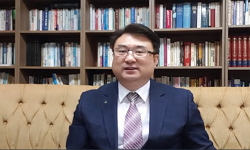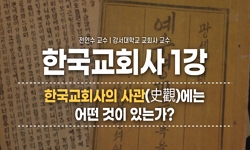초기 한국개신교 교회는 여성 해방의 종교로 소개되었고 여성교육을 주도하고 여성의식을 계발하여 가정과 교회, 그리고 사회에서 자발적이고 적극적인 인간으로 살 수 있도록 도와주었다...
http://chineseinput.net/에서 pinyin(병음)방식으로 중국어를 변환할 수 있습니다.
변환된 중국어를 복사하여 사용하시면 됩니다.
- 中文 을 입력하시려면 zhongwen을 입력하시고 space를누르시면됩니다.
- 北京 을 입력하시려면 beijing을 입력하시고 space를 누르시면 됩니다.
부가정보
국문 초록 (Abstract)
초기 한국개신교 교회는 여성 해방의 종교로 소개되었고 여성교육을 주도하고 여성의식을 계발하여 가정과 교회, 그리고 사회에서 자발적이고 적극적인 인간으로 살 수 있도록 도와주었다고 평가된다. 한편 1970년 이후 급성장한 한국교회는 오히려 여성억압의 종교라는 비판을 받고 있다. 이러한 부정적인 평가의 주된 이유는 남성중심적 한국교회 구조가 여성의 역할을 고정시키고 여성지도자, 특별히 여교역자에 대하여 성차별적 대우를 하고 있다는 데 근거하고 있다. 이 논문은 이러한 상황에서 한국교회 여교역자들의 인권이 침해당하고 있다는 사실에 주목하고 각 교단의 여성안수현황과 여교역자의 교역실태조사를 통하여 여교역자들의 인권의 현주소를 파악하는데 목적을 두고 있다. 크게 세 부분으로 나누어진 이 논문은 첫 번째로 여성안수에 관한 이론적 토론을 정리하고 있다. 성서와 관련하여 여성안수는 성서의 여성관련구절을 어떻게 해석할 것이냐의 문제로 교회역사 속에서 여성들의 지위와 역할을 규정하는 중요한 근거가 되어온 것을 볼 수 있다. 개신교가 여성안수를 허용한 것은 성서의 역사적 맥락을 이해하고 성서를 읽는 자들의 역사적 맥락을 중시하는 결과이지만 이러한 해석이 모든 개신교 교단에서 통용되는 것은 아니다. 두 번째로는 한국교회 여성안수의 교단별 현황을 다루고 있다. 여성안수의 허용여부는 단순히 성경해석만의 문제는 아닌 것으로 보인다. 부정적으로는 한국문화의 여성비하적 요소, 긍정적으로는 교회성장을 위한 대안으로서 여성안수가 다뤄지고 있다. 세 번째에서는 다양한 여교역자실태조사를 중심으로 여교역자의 교역실태를 분석하고 있다. 여교역자들은 일반적으로 낮은 임금과 제한된 교역내용(심방과 상담)을 담당하여 교회전체의 교역자라기보다는 여신도 전담의 교역자 역할을 맡고 있다. 그러나 안수를 받은 여교역자들은 일반적으로 자신의 소명감을 더 확인하고 교역조건에서나 경제적으로도 더 나은 대우를 받고 있는 것으로 나타나 여성안수가 여교역자에게 중요한 것으로 나타난다. 결론으로 필자는 여성안수의 범교단적 확대와 여교역자에 대한 대우개선, 여교역자들의 공적참여도 확대 등을 여교역자 인권개선안으로 들고 있다.
다국어 초록 (Multilingual Abstract)
While in its early history, the Korean church was known to have played a major role in the liberation of Korean women, the modern Korean church is often criticized for being male-oriented in its structure and for being discriminatory against women lea...
While in its early history, the Korean church was known to have played a major role in the liberation of Korean women, the modern Korean church is often criticized for being male-oriented in its structure and for being discriminatory against women leadership. In the first place, one of the major reasons for this criticism is that the church does not support women in carrying out their calling, that is, women's ordination. Several churches are still strongly opposed to the discussion of women's ordination. Secondly, the church does not treat women clergy equally with their male colleagues. This article attempts to deal with the history and current situation of women's ordination, and the work condition of women clergy in the Korean church in three stages: 1) the validity of women's ordination based on biblical and historical discussion, 2) the present situation of women's ordination by denominations, 3) the analysis of the work condition of women clergy based on the surveys. In the denominational discussion of women's ordination, cultural and church growth factors are considered to be as significant as biblical interpretation. According to the surveys which had been conducted by organizations, denominations, and persons (including the author's own), it is clear that women clergy feel more confident and secure after their ordination. However it is also true that they are mistreated in the church. Specifically, their job description is often confined to home visitations and counseling (especially for unordained clergy women) regardless of the wishes of women clergy. Their salary is lower than male clergy. Another inherent problem is that women clergy have a hard time finding full-time positions in local churches. Although low income and less appealing work conditions seem to be universal rather than particular, the remaining Confucian culture also plays a negative role in the Korean church. In conclusion the author suggests three things in order to minimize the violation of human rights of women clergy in the Korean church by promoting the following three resolutions: 1) adoption of women's ordination in the denominations which had rejected women's ordination, 2) correction of mistreatment of women clergy and promotion of equality in work, and 3) increase of women's representation in decision-making processes of the church.
동일학술지(권/호) 다른 논문
-
- 숙명여자대학교 아시아여성연구소
- 김혜영
- 2003
- KCI등재후보
-
- 숙명여자대학교 아시아여성연구소
- 홍석준
- 2003
- KCI등재후보
-
- 숙명여자대학교 아시아여성연구소
- 이선옥
- 2003
- KCI등재후보
-
- 숙명여자대학교 아시아여성연구소
- 백경재
- 2003
- KCI등재후보
분석정보
인용정보 인용지수 설명보기
학술지 이력
| 연월일 | 이력구분 | 이력상세 | 등재구분 |
|---|---|---|---|
| 2027 | 평가예정 | 재인증평가 신청대상 (재인증) | |
| 2021-01-01 | 평가 | 등재학술지 유지 (재인증) |  |
| 2018-01-01 | 평가 | 등재학술지 유지 (등재유지) |  |
| 2017-07-06 | 학회명변경 | 한글명 : 아시아여성연구소 -> 아시아여성연구원 |  |
| 2015-01-01 | 평가 | 등재학술지 유지 (등재유지) |  |
| 2011-01-01 | 평가 | 등재학술지 유지 (등재유지) |  |
| 2009-01-01 | 평가 | 등재학술지 유지 (등재유지) |  |
| 2006-01-01 | 평가 | 등재학술지 선정 (등재후보2차) |  |
| 2005-01-01 | 평가 | 등재후보 1차 PASS (등재후보1차) |  |
| 2003-01-01 | 평가 | 등재후보학술지 선정 (신규평가) |  |
학술지 인용정보
| 기준연도 | WOS-KCI 통합IF(2년) | KCIF(2년) | KCIF(3년) |
|---|---|---|---|
| 2016 | 1.17 | 1.17 | 1.22 |
| KCIF(4년) | KCIF(5년) | 중심성지수(3년) | 즉시성지수 |
| 1.06 | 1.13 | 1.569 | 0 |





 RISS
RISS DBpia
DBpia




